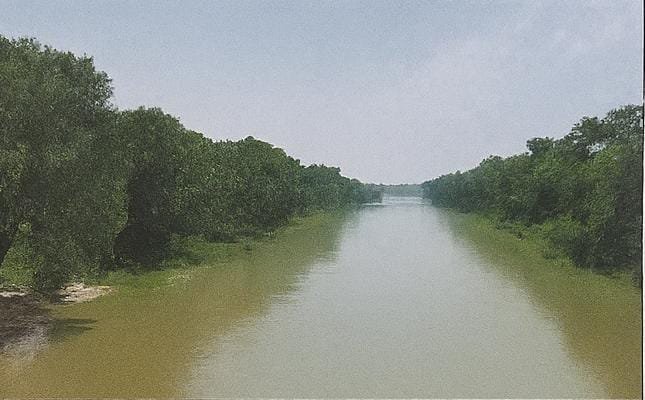
At the intersection of ecology and infrastructure, a rare shift in development priorities is unfolding along the historic Upper Ganga Canal. Once a symbol of colonial-era water management, this 111-kilometer stretch is now the site of a modern reckoning, where linear infrastructure expansion confronts the urgent need to conserve India’s dwindling green cover. In a move that reflects both pragmatism and a growing ecological conscience, the Uttar Pradesh government has realigned the proposed route of the Upper Ganga Canal Road to spare more than two-thirds of the trees initially marked for felling.
This recalibration, recently submitted to the National Green Tribunal (NGT), seeks to protect approximately 75,000 of the 112,722 trees earlier approved for removal. The road is now planned to be built 2.5 meters further from the canal’s edge than originally proposed, thus marking a crucial compromise. It does not halt development, but it does challenge its most ecologically damaging tendencies.
A Canal of History
Constructed during British rule in the 19th century, the Upper Ganga Canal was designed to irrigate the fertile plains of western Uttar Pradesh. Today, it is not only an irrigation lifeline but also an ecological corridor, rich in biodiversity and carbon sequestration potential. Over time, the green belt that developed along the canal has become a refuge for migratory birds, monkeys, and other species in a region increasingly stressed by urban expansion.
Yet, in the era of expressways and e-highways, this legacy canal became the center of a controversial road expansion. The Public Works Department (PWD) and the Uttar Pradesh government had originally proposed a two-lane road running parallel to the canal—intended to ease traffic congestion in areas such as Ghaziabad, Meerut, and Muzaffarnagar. But, as the NGT highlighted, the price of that convenience was alarmingly high: tens of thousands of trees.
Environmental Issues
Alarm bells rang when a February 2024 report revealed that the forest department had permitted tree felling in protected areas—without evident mitigation plans or compensatory afforestation proposals. What followed was a wave of legal and public scrutiny, culminating in a July 16 hearing where the Additional Solicitor General (ASG) informed the tribunal of the government’s revised plan.
“This is a pivotal moment,” said an environmental expert from the Delhi-based Centre for Science and Environment (CSE), requesting anonymity. “Uttar Pradesh has historically prioritized infrastructure at the cost of green spaces. But this shift reflects the growing weight of ecological concerns in policymaking.”
Officials explained that the revised alignment moves the road 2.5 meters further from the canal, sparing trees in the original construction zone. The change does come with a delay—at least two months to obtain the necessary forest clearance—but promises long-term ecological rewards.
Environmental Delay, Fiscal Gain
Infrastructure delays are typically frowned upon in governance circles, especially in an election-sensitive state like Uttar Pradesh. Yet this case tells a different story. The initial plan, estimated at ₹701.55 crore, has been revised down to ₹627.05 crore—an 11% reduction. Rarely do green-minded changes result in a lower budget rather than inflating it.
Moreover, studies by the Indian Council of Forestry Research and Education (ICFRE) estimate that one mature tree in urban or peri-urban areas provides ecosystem services worth ₹23,000 annually—from air purification to groundwater recharge and carbon sequestration. By preserving 75,000 trees, the state could maintain ecological services valued at over ₹1,700 crore each year.
Sanjay Singh, executive engineer at PWD, emphasized the technical challenges that remain. “This alignment change has triggered a fresh EIA [environmental impact assessment], which needs approval from both the forest department and the Ministry of Environment. We hope to fast-track the paperwork.”
Future Development, National Implications
Although this may seem like a local, procedural adjustment, its implications are national. India’s infrastructure push—through schemes like PM Gati Shakti and Bharatmala—has often collided with environmental concerns. Projects such as the Mumbai-Ahmedabad bullet train and the Char Dham road in Uttarakhand have led to significant ecological costs.
In 2023 alone, India lost 1.5 million hectares of tree cover, according to Global Forest Watch—an area nearly five times the size of Delhi. Much of this loss is tied to the expansion of roads, railways, and power infrastructure.
In this context, the Upper Ganga Canal realignment is more than a minor tweak. It serves as a symbolic template. Can infrastructure evolve in tandem with ecological sensibility? Can roadmaps be redrawn not just with ink, but with conscience?
Public Trust and Transparent Governance
Crucial to this case is the growing influence of judicial and public oversight. The National Green Tribunal’s proactive stance compelled transparency, accountability, and more thoughtful planning. A letter from the state government, dated July 9, not only granted administrative approval but also confirmed financial backing for the revised estimate—an encouraging sign of bureaucratic responsiveness under scrutiny.
The tribunal has scheduled its next hearing for October 9, by which time the forest clearance process is expected to be completed.
Toward a Sustainable Path
The Upper Ganga Canal Road realignment may not capture the headlines like a new airport or metro line, but it sends a deeper message: that roads do not always have to cut through forests. That policy, when held accountable by science and civic engagement, can turn toward preservation.
In a country where development is often measured in kilometres and megawatts, Uttar Pradesh’s quiet recalibration around a historic canal offers a powerful reminder—true progress includes what we choose not to destroy.





















